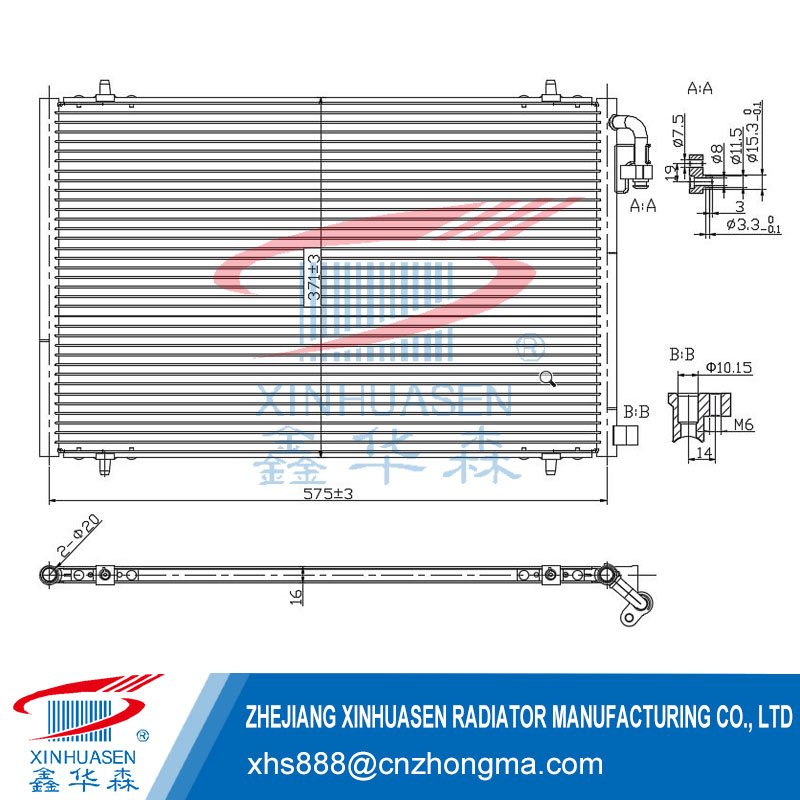Like commonly used air conditioners, the car condenser in the automotive air conditioning system is an important heat exchange backup and is essentially a radiator, so it is necessary to maximize the heat dissipation surface area of the automotive car condenser.
Its main function is to liquefy or condense the high-temperature and high-pressure refrigerant vapor discharged from the compressor. In the process, it dissipates heat and becomes a high-pressure liquid with a certain degree of subcooling. Supercooling here means that the liquid will not freeze at a temperature lower than the freezing point of the car's car condenser. A concept needs to be corrected here. In fact, the solidification and crystallization temperature of the liquid is lower than the theoretical crystallization temperature, that is to say, the actual crystallization temperature of water is lower than 0, but this difference is related to the cooling rate.
car condensers used in automobiles usually have finned, tube-belt and finned automotive car condensers.
The first is the tube-fin car condenser, which is a kind of car condenser used in the early stage of the processor's automobile air conditioner. It is characterized by a simple manufacturing process. Usually simpler productions don't work very well. Similarly, the heat dissipation effect of this car condenser is relatively poor, and it is mostly used in large and medium-sized passenger cars.
In addition, there is also a tube-belt car condenser, which is made by bending a multi-empty flat tube into a serpentine shape, and then installing a heat dissipation strip in it. This cooling effect is better than tube-fin car car condensers. Of course, this will be more expensive, generally used in small cars.
The last is the finned car condenser, which is different from the previous two car condensers. This kind of car condenser processes fins directly on the planar multi-channel, just like the one-piece badminton racket is better than the split type. This kind of car condenser has smaller thermal resistance, better heat dissipation performance, and much better shock resistance than car condensers.







